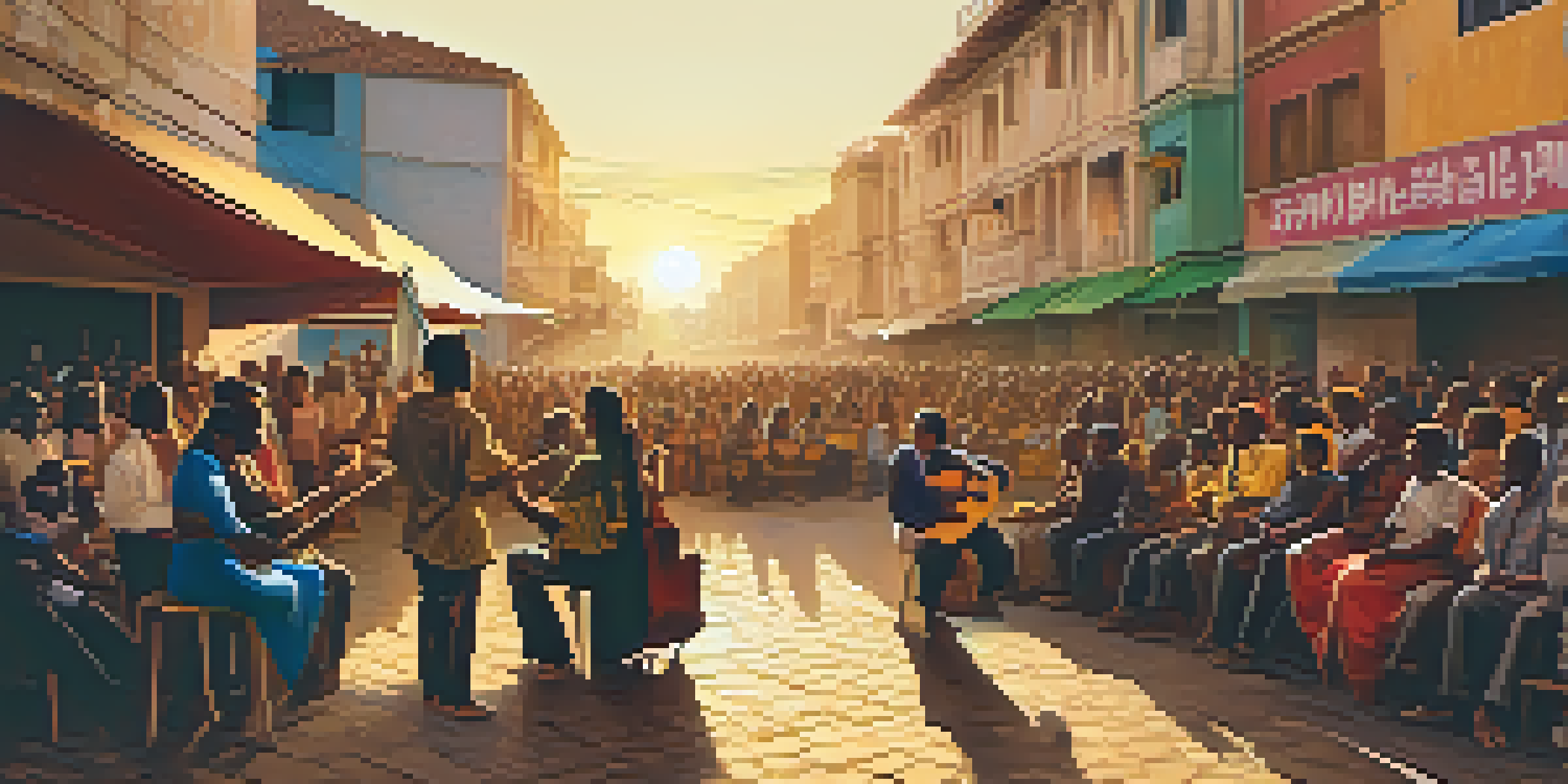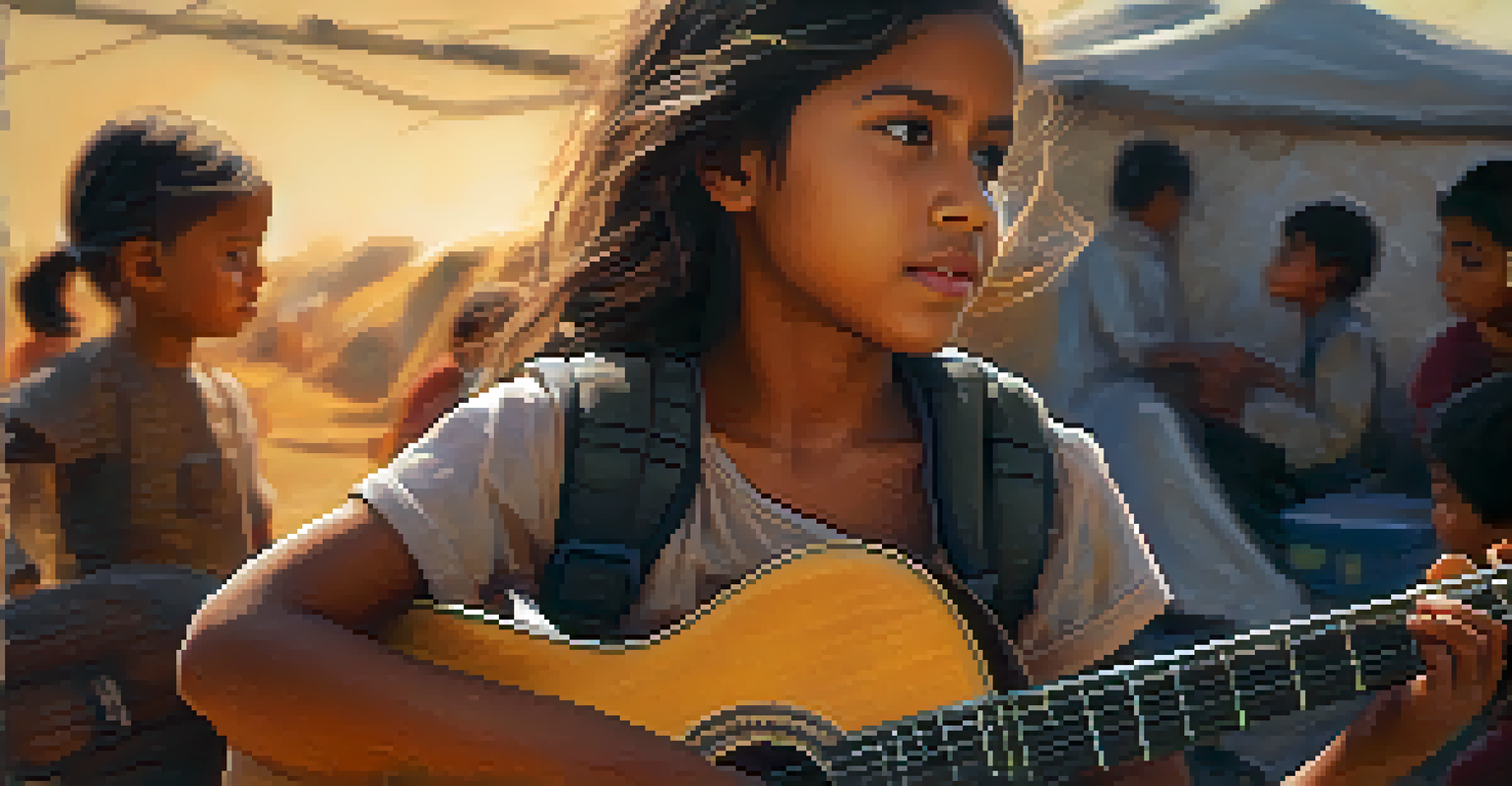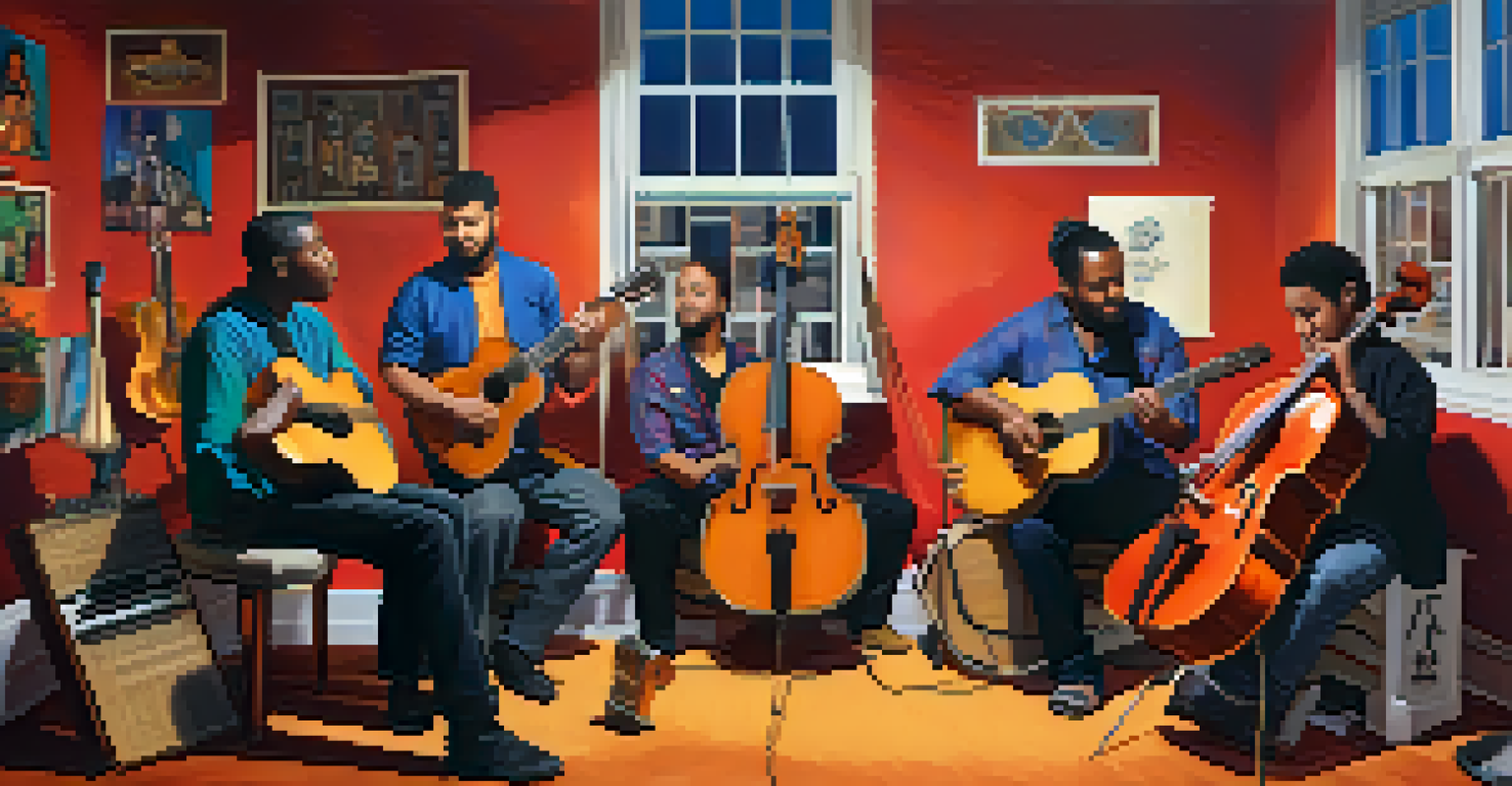Music as a Tool for Advocacy in Conflict-Affected Regions

The Role of Music in Conflict-Affected Areas
Music has always been a powerful medium for expression, especially in conflict-affected regions. It serves not only as a source of comfort but also as a means of communication and solidarity among communities facing adversity. In these areas, music can amplify voices that are often silenced, creating a channel for change and hope.
Where words fail, music speaks.
For instance, during the civil war in Syria, musicians used their art to document experiences and share stories that global audiences might not otherwise hear. This not only raised awareness about the ongoing struggles but also fostered a sense of unity among those impacted by the conflict. Through lyrics, melodies, and rhythms, they conveyed messages that transcended language barriers.
Moreover, music can act as a bridge between different cultural groups, promoting understanding and empathy. By celebrating shared experiences or highlighting diverse backgrounds, it fosters connections that can be crucial in conflict resolution and peacebuilding efforts.
Music as a Form of Protest and Resistance
In many cases, artists use music as a form of protest against oppression and injustice. Songs can serve as anthems for movements, rallying people to stand together against tyrannical regimes or social injustices. This form of resistance is particularly potent in regions where traditional forms of protest may be met with violent repression.

A notable example is the South African anti-apartheid movement, where music played a key role in uniting individuals against a common struggle. Songs like 'Nkosi Sikelel' iAfrika became symbols of hope and resilience, echoing the sentiments of millions yearning for freedom. Such musical expressions can mobilize communities and inspire action even in dire circumstances.
Music Unites in Conflict Zones
Music serves as a powerful medium for expression, fostering solidarity and communication among communities affected by conflict.
Additionally, this use of music as protest can also attract international attention, drawing support from outside the affected regions. When music spreads through social media and other platforms, it can connect grassroots movements to a global audience, amplifying their message and garnering solidarity.
Therapeutic Benefits of Music in Conflict Zones
The therapeutic benefits of music cannot be overlooked, particularly in conflict-affected regions where trauma is pervasive. Engaging with music can provide a necessary outlet for emotions, helping individuals process their experiences and heal from psychological wounds. Activities like music therapy have been shown to foster resilience and recovery among those who have endured violence.
Music can change the world because it can change people.
In refugee camps, for example, music programs have been implemented to help individuals cope with their trauma. These programs often include singing, songwriting, and instrument playing, allowing participants to express feelings they may struggle to articulate otherwise. This creative expression can be a crucial step towards rebuilding lives shattered by conflict.
Moreover, music fosters a sense of community and belonging, which is vital for healing. By coming together through shared musical experiences, individuals can find solace in knowing they are not alone and that their experiences are valid.
Fostering Dialogue Through Musical Collaborations
Collaborative musical projects can be powerful tools for fostering dialogue between opposing sides in a conflict. By bringing together musicians from different backgrounds, these projects encourage conversations around shared goals and mutual understanding. The act of creating music together can break down barriers and challenge preconceived notions about the 'other.'
One such initiative is the Playing for Change movement, which brings together musicians worldwide to promote peace and unity. By collaborating on songs that embody messages of hope and understanding, they demonstrate that music can transcend cultural and political divides. These collaborations not only entertain but also educate and inspire action.
Anthems of Resistance and Hope
Artists use music as a form of protest, rallying support against oppression while inspiring resilience and action.
Additionally, these musical interactions can have ripple effects, influencing communities beyond the participants. When audiences witness musicians from opposing sides working together, it can inspire broader dialogues and pave the way for reconciliation.
The Impact of Global Platforms on Local Music
In our digital age, global platforms have transformed how local music from conflict-affected regions is shared and consumed. Social media, streaming services, and online video platforms allow artists to reach audiences far beyond their geographic boundaries. This exposure can elevate local struggles and narratives, bringing them to the forefront of global conversations.
For instance, the rise of platforms like YouTube has enabled artists from war-torn regions to share their work, often gaining international recognition and support. This visibility can lead to fundraising efforts, awareness campaigns, and collaborations that may not have been possible otherwise. As a result, local music can become a catalyst for social change on a global scale.
Moreover, these platforms can encourage cultural exchange, allowing artists to learn from one another and infuse their work with diverse influences. This cross-pollination can enrich local music scenes and create a more profound collective understanding of the issues at play in conflict zones.
Educational Initiatives and Music Programs
Educational initiatives that incorporate music can play a vital role in conflict-affected regions, providing youth with opportunities for expression and creativity. These programs can serve as safe spaces for young people to explore their identities and address the challenges they face. Through music education, they gain skills that can empower them and provide alternatives to violence.
For example, organizations like Musicians Without Borders work to establish music programs in areas affected by conflict. These initiatives not only teach musical skills but also foster social cohesion, helping youth from diverse backgrounds to collaborate and learn from each other. Such interactions can be instrumental in breaking cycles of violence and fostering peace.
Healing Through Musical Expression
Engaging with music provides therapeutic benefits, helping individuals process trauma and rebuild their lives in conflict-affected areas.
Additionally, these programs can instill hope and resilience in young people, giving them a sense of purpose and belonging. By engaging in music, they can envision a future where they contribute positively to their communities, ultimately reducing the allure of extremism.
The Future of Music and Advocacy in Conflict Zones
As we look to the future, the role of music as a tool for advocacy in conflict-affected regions will likely continue to evolve. With advancements in technology and an increasingly interconnected world, musicians have more opportunities to share their stories and connect with global audiences. This could further amplify the messages of resilience, hope, and change that music embodies.
Moreover, as awareness of the importance of music in conflict resolution grows, we may see more investment in music programs and collaborations aimed at promoting peace. These initiatives can harness the power of music to create lasting change, fostering dialogue and understanding in areas where it is desperately needed.

Ultimately, the potential of music as a transformative force in conflict zones is immense. By continuing to support and elevate the voices of musicians from these regions, we can help pave the way for a more peaceful and united future.